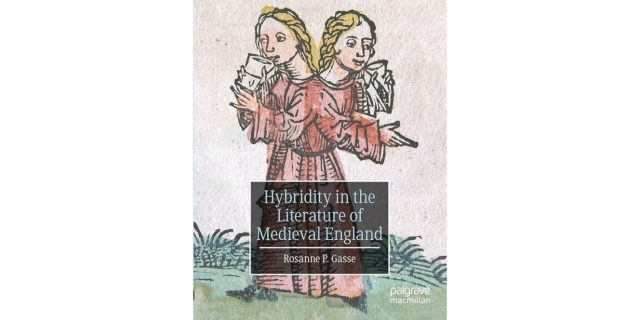
By
Rosanne Gasse
January 2024
Print Version
What you need to know
As much as some people may wish to deny it, hybridity is a fact of existence. Hybridity in the Literature of Medieval England explores four different types of hybridity found in literature written in English between the thirteenth and fifteenth centuries: mixed ethnic identity, human/supernatural hybrids, the changeability of the human body and identity, and those hybrids who exist in-between life and death.
Why this research is important
There are multiple guises in which someone or something can be considered hybrid. Mixed ancestry or a hybrid car are two examples. Yet are people ‘mixed’ when they wear glasses, have an artificial hip, and share the space in their gut with multiple species of bacteria? Why, or why not? Why do some combinations and differences bother us while others do not? In this book, through study of how medieval authors handled the concept of mixture, I answer such questions. I show that hybridity, although it is grounded in difference, points toward what is held in common. Hybridity points to our sameness, even with those we label monsters.
How the research was conducted
My research invariably starts with a puzzle. For this project, I wondered why there are so few children of mixed ethnicity to be found in medieval romances when mixed marriages – partners of different ethnic, social, and religious backgrounds – are so commonplace in them. Through close reading of more than twenty-five Middle English stories, I found an answer to that puzzle in how medieval authors dealt with hybridity. I then realized that other projects I was working on also centred on hybridity, but of very different sorts. I united all these projects in this one book.
What the researcher found
The first and second sections of the book centre on the most obvious type of hybridity in literary texts: biological miscegenation in which ancestry is mixed and cultural status is complicated by having parents from two different groups. In medieval literature, this social dilemma, if regarded as unacceptable, can be expressed in code through a half human/half faery (or half demon) character who resolves the problem by the end of the story. The first section shows the resolution in one direction as the character becomes wholly human; the second section, the opposite direction. The third section turns attention to the body and body parts as expressions of identity in John Gower’s fourteenth-century poem Confessio Amantis. The boundaries crossed are human and animal, person and thing, male and female, able and disabled. The final section of the book considers the hybridity of dying, a state in which one is simultaneously alive and dead. These stories include tales of the resurrected dead, ghosts, and revenants.
How this research can be used
My work on hybridity can supplement any one of various theoretical stances. Critical race studies, postcolonial studies, disability studies, monster studies, gender studies, animal studies, cyborg studies, and translation studies (among others) all have something to say about the hybrid. Constructions of mixed identity, whether based on the biological, the cultural, the social, the material, the spiritual, or something else entirely, speak to the pressures and anxieties of the period. In understanding how medieval authors grappled with hybridity we can, therefore, better appreciate their works but also recognize how hybridity in our own time can unite where division may otherwise prevail.
About the Researcher
Keywords
- hybridity
- medieval literature
- Middle English
Publications Based on the Research
Gasse, R. P. (2023). Hybridity in the literature of medieval England. Palgrave MacMillan.
Editor: Christiane Ramsey
Read more BU Research
Research at Brandon University follows comprehensive policies designed to safeguard ethics, to ensure academic integrity, to protect human and animal welfare and to prevent conflicts of interest.

